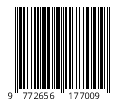Efektivitas Pengelolaan Ruang Terbuka Hijau Wisdom Park UGM bagi Pemulihan Urban Stress di Yogyakarta
DOI:
https://doi.org/10.35166/jipm.v7i2.59Keywords:
Effectiveness, Risk management, Green Open Space (GOS), Urban stressAbstract
The high population density in Yogyakarta has led to various economic issues and serves as an indicator of the rising level of depression in the Province of DIY. Urban facilities like Green Open Spaces (GOS) offer a potential means to reduce urban stress in the city. However, the GOS standards as a solution for urban stress recovery often do not align with current regulations. This study aims to assess the effectiveness of GOS at Wisdom Park UGM in mitigating urban stress among Yogyakarta residents. Using a quantitative approach, the research findings are presented deductively and descriptively. The results of the analysis highlight the potential and problems of each research aspect. The variables observed here are the goals of the visitors’ activities, the effectiveness of GOS management (including vegetation, cleanliness, design, infrastructure, and accessibility), and urban stress recovery activities within the research locus, based on a survey of 100 respondents aged 15 to 64 years old. The findings indicate that Wisdom Park UGM is fairly effective as a GOS to restore urban stress. The park’s strengths include the diversity of vegetation and fauna, convenient access via various transportation modes, affordable entry fees, and a comprehensive range of supporting activities and facilities.
References
Amiroh, N., & Martana, S. P. (2023). Penerapan tanaman aromatik melalui pendekatan arsitektur biofilik dalam mengatasi urban stres. Prosiding Temu Ilmiah, 11(1), 1–8. https://doi.org/10.32315/ti.11.g001
Arifwidodo, S. D., & Chandrasiri, O. (2020). Urban heat stress and human health in Bangkok, Thailand. Environmental Research, 185, 109398. https://doi.org/10.1016/j.envres.2020.109398
Aura, C. N. (2021). Biophilic healing center for urban stress di kota Tangerang. Arsitektur UIN Malang.
Badan Pusat Statistik Yogyakarta. (2024). Jumlah penduduk Yogyakarta tahun 2023. https://yogyakarta.bps.go.id/id
BLKP. (2024). Inspirasi kursi taman yang indah dan nyaman. https://blkp.co.id/blogs/detail/7-model-kursi-taman
Cahyaningtyas, M. A., & Kusuma, H. E. (2020). Preferensi masyarakat terhadap ruang kota sebagai tempat relaksasi. Jurnal RUAS, 18, 1–12. https://doi.org/10.21776/ub.ruas.2020.018.01.1
Casagrande, M. (2022). Marco Casagrande laboratory: Paracity (Urban Acupuncture) [Electronic version]. Rionero in Vulture Oil Forest League.
Giannico, V., Spano, G., Elia, M., D’Este, M., Sanesi, G., & Lafortezza, R. (2021). Green spaces, quality of life, and citizen perception in European cities. Environmental Research, 196, 110922. https://doi.org/10.1016/j.envres.2021.110922
Hakim, L. N., Prayoga, R. A., Ganti, M., Sabarisman, M., & Hidayatulloh, A. N. (2023). Kesejahteraan semu dalam dialektika perilaku bunuh diri di Kabupaten Gunung Kidul: Tinjauan sosial psikologis. Sosio Konsepsia: Jurnal Penelitian dan Pengembangan Kesejahteraan Sosial, 12(2), 82–97. https://doi.org/10.33007/ska.v12i2.3235
Hakim, R., & Utomo, H. (2008). Komponen perancangan arsitektur lansekap: Prinsip-unsur dan aplikasi desain. PT Bumi Aksara.
Hanan, H. M., & Ariastita, P. G. (2020). Penilaian efektivitas fungsi taman kota sebagai ruang terbuka hijau publik di Kota Malang. Jurnal Teknik ITS, 9(2), 47–52. https://doi.org/10.12962/j23373539.v9i2.52902
Kuo, M. (2015). How might contact with nature promote human health? Promising mechanisms and a possible central pathway. Frontiers in Psychology, 6, 1093. https://doi.org/10.3389/fpsyg.2015.01093
Lehberger, M., Kleih, A. K., & Sparke, K. (2021). Self-reported well-being and the importance of green spaces: A comparison of garden owners and non-garden owners in times of COVID-19. Landscape and Urban Planning, 212(4), 1–30. https://doi.org/10.1016/j.landurbplan.2021.104108
Lopez, B., Kennedy, C., Field, C., & McPhearson, T. (2021). Who benefits from urban green spaces during times of crisis? Perception and use of urban green spaces in New York City during the COVID-19 pandemic. Urban Forestry & Urban Greening, 65(1), 127354. https://doi.org/10.1016/j.ufug.2021.127354
Mashar, M. F. (2021). Fungsi psikologis ruang terbuka hijau. Jurnal Syntax Admiration, 2(10), 1930–1943. https://doi.org/10.46799/jsa.v2i10.332
Putri, A. H. D. (2023). Pengelolaan ruang terbuka hijau sebagai strategi kota sehat pada kawasan perkotaan di Indonesia. Rustic: Jurnal Arsitektur, 3(1), 28–45. https://doi.org/10.32546/rustic.v3i1.1894
Purwanti, S. (2022). Memaksimalkan fungsi taman kota sebagai ruang terbuka publik. Jurnal Jendela Inovasi Daerah, 5(1), 56–70. https://doi.org/10.56354/jendelainovasi.v5i1.114
Pykett, J., Osborne, T., & Resch, B. (2020). From urban stress to neuro urbanism: How should we research city well-being? Annals of the American Association of Geographers, 110(6), 1936–1951. https://doi.org/10.1080/00045608.2020.1769677
Rachmawati, R. (2018). Pengembangan smart village untuk penguatan smart city dan smart regency. Jurnal Sistem Cerdas, 1(2), 12–19. https://doi.org/10.37396/jsc.v1i2.9
Rasyida, A. (2021). Hubungan antara persepsi terhadap kualitas dan pemanfaatan ruang terbuka hijau dengan kesejahteraan psikologis anak. Tataloka, 23(3), 404–417. https://doi.org/10.14710/tataloka.23.3.404-417
Renstra Perangkat Daerah Dinas Lingkungan Hidup Kota Yogyakarta tahun 2017–2022. (2024). Rencana strategis. https://lingkunganhidup.jogjakota.go.id/page/index/rencana-strategis
Sucahyo, F. M., & Fanida, E. H. (2021). Inovasi pengelolaan sampah menjadi pembangkit listrik tenaga sampah (PLTSa) oleh Dinas Kebersihan dan Ruang Terbuka Hijau (DKRTH) Surabaya: Studi kasus di Tempat Pembuangan Akhir (TPA) Benowo Surabaya. Publika, 9(2), 39–52. https://doi.org/10.26740/publika.v9n2.p39-52
Sugiyono. (2018). Metode penelitian kuantitatif, kualitatif, dan R&D. Alfabeta.
Tambunan, E. K., Siahaan, U., & Sudawarni, M. M. (2021). Pengaruh ruang terbuka hijau terhadap psikologis masyarakat di Kota Bekasi khususnya Kecamatan Jatiasih. Arsitektura Jurnal Ilmiah Arsitektur dan Lingkungan Binaan, 19(2), 297–307. https://doi.org/10.20961/arst.v19i2.53995
Zhu, J., & Xu, C. (2021). Sina microblog sentiment in Beijing city parks as measure of demand for urban green space during the COVID-19. Urban Forestry & Urban Greening, 58(12), 126913. https://doi.org/10.1016/j.ufug.2021.126913
Downloads
Published
Issue
Section
License
Copyright (c) 2024 Journal of Infrastructure Policy and Management (JIPM)

This work is licensed under a Creative Commons Attribution-ShareAlike 4.0 International License.















